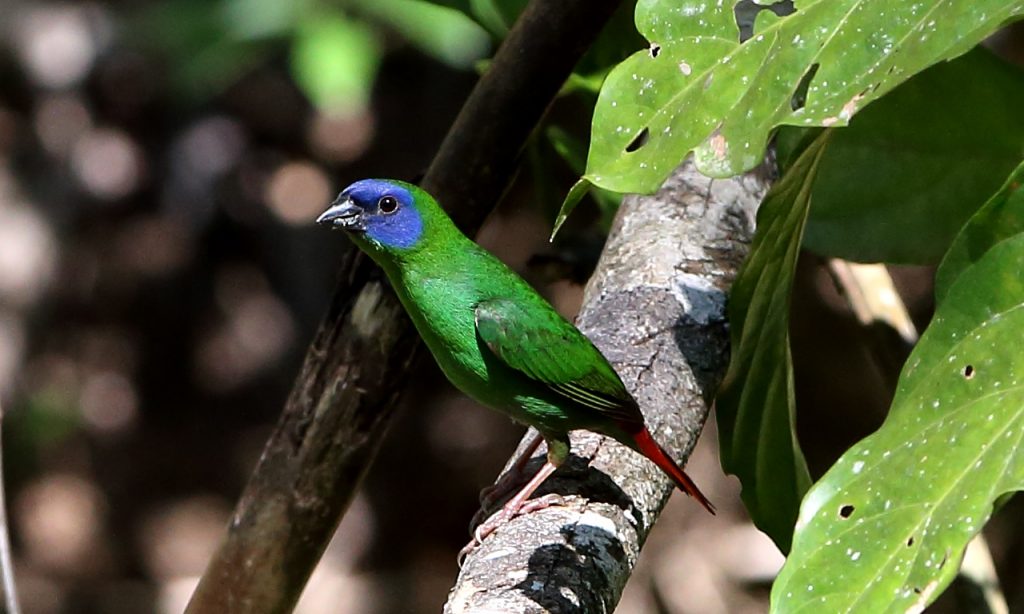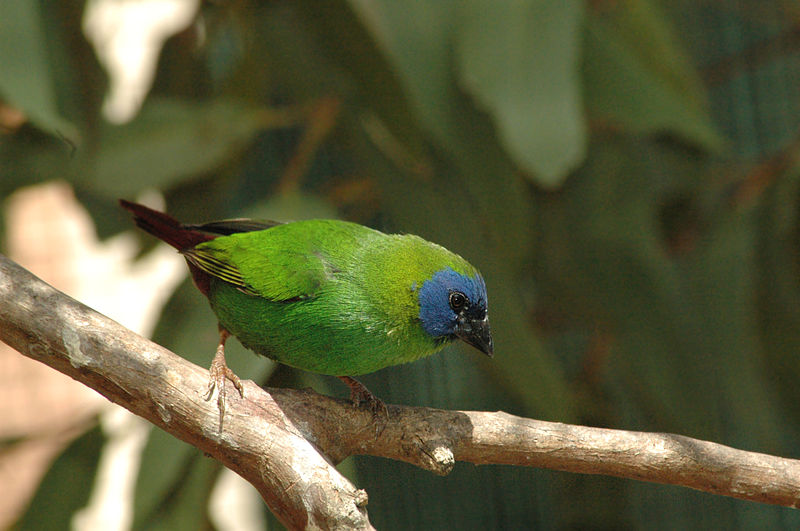The Blue-faced Parrotfinch is a species of estrildid finch found in north-eastern Australia, Japan and Indonesia. It is commonly kept in aviaries throughout Australia and Asia, but unfortunately less common in Europe and North America where a pair can cost in excess of $300USD. A lutino mutation is well established in Australian aviaries.

Housing & Compatibility
Blue-faced parrotfinches can be housed as single pairs, small colonies or as part of a mixed collection of passive finches. Males will chase and harass females, so there should always be an equal or greater number of females to ensure an even distribution of aggression. They must not be housed with other species of parrotfinch, as hybridization can occur.
Blue-faced parrotfinches are best suited to a large planted aviary that emulates their natural environment. Introducing non-toxic plants and grasses native to tropical and subtropical climates will provide many benefits, including increased humidity (essential for breeding), shelter, shade and greater aesthetic appeal for the keeper. As a highly energetic species, blue-faced parrotfinches may disturb other species housed in the same aviary. It’s advisable to keep them in large, sparsely populated aviaries with many hiding places and sight barriers.
Diet & Feeding
Seed forms the basis of the blue-faced parrotfinch’s diet. Seed lacks many essential vitamins and minerals which must be compensated for by introducing other foods. Sprouting seed increases its nutritional value and is a cheap way to improve your birds health. Freshly grown green seed heads should also be offered frequently.
Fruits, vegetables, and leafy greens should be provided throughout the year. Kale, bok choy, endive, and silverbeet are especially nutritious and will be readily eaten. Finally grated carrot, apple, or broccoli are also popular fresh-food options, as are halved Lebanese cucumbers.
Commercial soft finch food mixes can also be provided for an added nutrient boost, particularly when breeding. These should be given sparingly as Blue-faced parrotfinches can be prone to obesity. Blue-faced parrotfinches will readily consume live food, however maggots, termites and mealworms can improve breeding performance.
Birds should never be fed avocado, chocolate, caffeine, onion, alcohol, or anything else on our list of dangerous foods.

Breeding & Reproduction
Blue-faced parrotfinches are generally reliable breeders and will nest throughout the year – with best results in autumn and spring. They will construct a nest just above ground level in a box or dense shrub, using fine grass and feathers. The hen will lay 3-6 eggs which will be incubated by both parents for approximately two weeks. Young birds will fledge at approximately three weeks of age.
Allowing pairs to produce more than 3-4 clutches will greatly reduce the health and longevity of your birds. Steps should be taken to prevent birds from breeding in the hottest or coldest months.
Sexing
It is difficult to visually sex the blue-faced parrotfinch, so DNA sexing may be required. The sex can usually be determined by the size of the blue face mask. The male’s mask will extend further back on the head than the female. Males also tend to be darker and larger than females, however particularly good quality hens will have colour and size comparable to the average male.
Mutations
A handful of mutations have been developed in aviculture, most notably the lutino which has a white face mask and yellow body. These birds unfortunately suffer from poor eyesight and are prone to sunburn so should only be housed in an aviary with sufficient shade.
Health
A strict worming and parasite control is especially important for parrotfinches, as pests tend to grow more prolifically in warm and damp environments favored by these birds.